The T2E1 prototype
The first modern infantry tank design (the cavalry already had its M1 "Combat Car"), was the T1, built by Rock Island Arsenal, the main US federal heavy arsenal, in charge of the specifications. The T1 appeared in 1934, and bore some resemblances with the British Vickers 6-ton -Mark E, notably the suspension, made of two quadruple bogies. After the T1 came the T2 prototype, and the the T2E1 with new VVSS suspensions and a revised, taller hull. By 1935, this prototype formed the basis for the M2 light tank.Design of the M2
The first M2 had a one-man turret equipped with a cal.50 (12.7 mm) and a coaxial 7.62 mm (0.3 in) Browning M1919, with another placed in the hull, on a ball mount operated by the co-driver. The hull general design, turret, tracks, VVSS suspension design with a front drive sprocket and rear idler, at well as the two bogies with vertical coil springs and two return roller in between, were identical to the M1 suspension, in order to save time and be cost-effective. The engine also was the same, a compact but tall aviation radial Continental W-670, which gave a top speed of 58 km/h (36 mph). However, the internal arrangement made it possible to increase the amount of fuel carried. The original crew comprised three men, the commander also being the gunner and loader, operating the cal.50 (12.7 mm).M2A1 to M2A3
The M2A1 was the series production vehicle, only built to ten units in 1936, and equipped with a single turret. However, it quickly appeared that the Army wanted a twin-turret configuration, then favored by other armies. The design was changed, new turrets devised, which led to the mass-produced M2A2. One of these turrets housed the main .50 cal (12.7 mm). machine gun, while the other had the .30 (7.62 mm) caliber M1919. 239 units were produced, quickly becoming the staple of US infantry tank troops until 1937. Although displaying an obsolete configuration, these tanks were popularly known as the "Mae West", after the famous busty actress. By 1937, a new set of modifications was in line. The suspensions were revised, the hull slightly lengthened and the bogies placed farther apart, while the front armor was increased to 25 mm (0.98 in). This version was produced as the M2A3 only to 72 units, due to a rapid change of specifications.The M2A4: Forerunner for the M3 Stuart
While many Americans served on the Republican side during the Spanish Civil War, observers came to the conclusion that a tank needed guns, and not only machine-guns. The only available was the standard infantry 37 mm (1.46 in) M5 AT gun then in service, and there was no way it could fit inside a small turret -thus eliminating the twin-turret configuration. To save time, the late evolution of the M1A1 Combat Car served as a model, and the same turret was used. According to the November 1938 OCM #14844 specification, a single M2A3 was removed from the assembly line and modified accordingly, thus establishing the M2A4 standard. This version proved to be the most numerous of all, with 375 delivered, the last ten as far as March 1942. A new Continental 7-cylinder engine was chosen, fuel capacity increased (the top range was now 200 miles/322 km), the armor was thickened everywhere to 25 mm (0.98 in) except on the roof and bottom. The secondary armament comprised no less than 5 machine-guns for a crew of 4, having one coaxial, one AA (turret pintle mount), two in sponsons and one in the nose hull. In late 1941, the M2A4 was succeeded by the M3. They could be distinguished by the rear idler wheel size and configuration, which eased ground pressure for the second.Combat records
The M2A1, A2 and A3, being obsolete by December 1941, were all kept for training only on American soil. This was also the case of most M2A4s, although 50 saww action in Guadalcanal with the US Marine Corps 1st tank battalion, and 36 of the 100 British M2A4s originally ordered in early 1941 (later cancelled for the M3) were shipped to North Africa, then given to the British Army\'s 7th Hussars and 2nd Royal Tank Regiment, to be sent to India and fight during the Burma campaign. During the most contested fight they dealt with IJA\'s 14th Tank Regiment.Links
The M2 Light Tank on WikipediaThe M2-M2A4 on WWIIVehicles
M2A4 Light Tank specifications |
|
| Dimensions | 4.43 x 2.47 x 2.65 m (14ft5in x 8ft1in x 8ft8in) |
| Total weight, battle ready | 11.6 tons (12.8 short tons) |
| Crew | 4 (commander/loader, driver, co-driver, gunner) |
| Propulsion | Continental W-670 9A 7-cyl. air-cooled gasoline, 245 hp (160 kW) |
| Maximum speed | 58 mph (36 km/h) on road |
| Suspension | Vertical volute springs (VVSS) |
| Range | 320 km (200 mi) |
| Armament | 37 mm (1.46 in) gun M5,103 rounds 5 x cal.30 (7.62 mm) Browning M1919A4, 8470 rounds |
| Armor | 6-25 mm (0.24-0.98 in) |
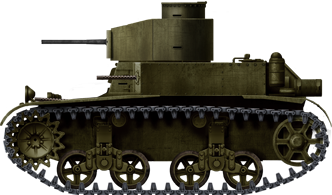
M2A1 in 1937.
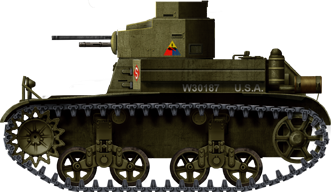
M2A2 "Mae West" from the 21st Armored Division - Fort Belvoir, Virginia, November 1940.
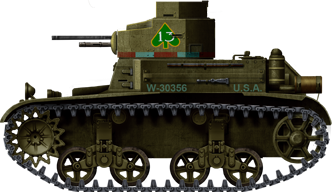
M2A2 of the 192nd Tank Battalion, 3rd Army maneuvers, early 1941.
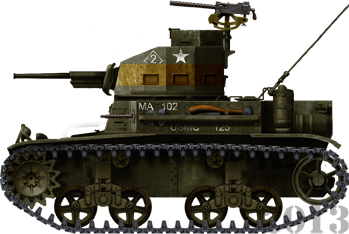
M2A4 of the USMC 1st Tank Battalion, Company A, Guadalcanal, September 1942.
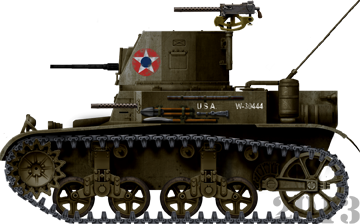
M3 prototype in mid-1941, with a .50 (12.7 mm) caliber main armament. This future main US Army light tank was based on the M2A4, but with increased protection and a revised idler wheel.

WW2 Tanks




























WW2 tanks posters

All Tiger tanks liveries.

Panther liveries and variants

WW2 Armour - All tanks











Tanks aces and single tanks series

Find more there

Museums, Movies, Books & Games
The Tanks and Armor in pop culture
Tanks and armored vehicles in general are only really grasped when seen first person: The mass, the scale, it's all there. Explore also the way tanks were covered in the movie industry, in books and in video games.Movies:
Best tanks movie on warhistoryonline.com
On imdb.com
On bestsimilar.com/
miltours.com
liveabout.com/
watchmojo.com
Video Games:
pcgamesn.com
historyhit.com
levvvel.com
vg247.com/best-tank-games
mmobomb.com/
alienwarearena.com

